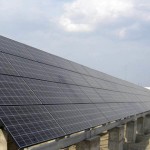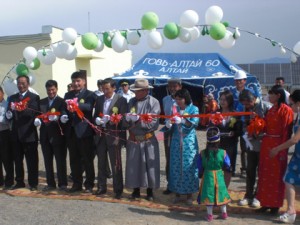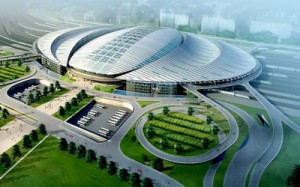 Talk about bringing solar power to the people. In cooperation with the World Bank’s Renewable Energy for Rural Access Project two Mongolian villages Gobi-Altai and Bayantooroi, which are both located in the western Gobi Desert region of have gone solar. The project was handled by Kyocera because of the company’s years of experience in the solar energy business in Mongolia, and the durability of its high-quality modules to harsh
Talk about bringing solar power to the people. In cooperation with the World Bank’s Renewable Energy for Rural Access Project two Mongolian villages Gobi-Altai and Bayantooroi, which are both located in the western Gobi Desert region of have gone solar. The project was handled by Kyocera because of the company’s years of experience in the solar energy business in Mongolia, and the durability of its high-quality modules to harsh  weather conditions. The systems were supplied and installed by the company’s subsidiary, KYOCERA (Tianjin) Sales & Trading Corporation. The installations are among the largest stand-alone solar power generating systems in the world. They are providing a total of 305.1kW of solar power. The systems were installed this summer and are now currently helping to provide electricity for the daily needs of the local residents. The World Bank project aims to increase electricity and improve reliability of electricity service through the use of solar energy to help improve the living conditions of the herder population and off-grid village communities.
weather conditions. The systems were supplied and installed by the company’s subsidiary, KYOCERA (Tianjin) Sales & Trading Corporation. The installations are among the largest stand-alone solar power generating systems in the world. They are providing a total of 305.1kW of solar power. The systems were installed this summer and are now currently helping to provide electricity for the daily needs of the local residents. The World Bank project aims to increase electricity and improve reliability of electricity service through the use of solar energy to help improve the living conditions of the herder population and off-grid village communities.
 Kyocera began its solar energy business in 1975 has a long history of proactively installing solar power generating systems in rural areas of Asia and Africa. In 1983, the company started by installing a system in the village of Kankoi, Pakistan; in 1985, another system for rural electrification in Gansu Province, China; and a solar-powered pump for an irrigation station in Thailand the following year.
Kyocera began its solar energy business in 1975 has a long history of proactively installing solar power generating systems in rural areas of Asia and Africa. In 1983, the company started by installing a system in the village of Kankoi, Pakistan; in 1985, another system for rural electrification in Gansu Province, China; and a solar-powered pump for an irrigation station in Thailand the following year.
Kyocera has been active in the solar energy business in Mongolia for many years, taking part in a project by the New Energy and Industrial Technology Development Organization (NEDO) to supply portable solar power generating systems for 200 nomadic herding families’ yurts between 1992 and 1996. Furthermore, in 2011, with the Japanese government’s Official Development Assistance (ODA), Kyocera modules will be used for a 453.18kW grid-tie system for the Genghis Khan International Airport in Ulan Bator City.








